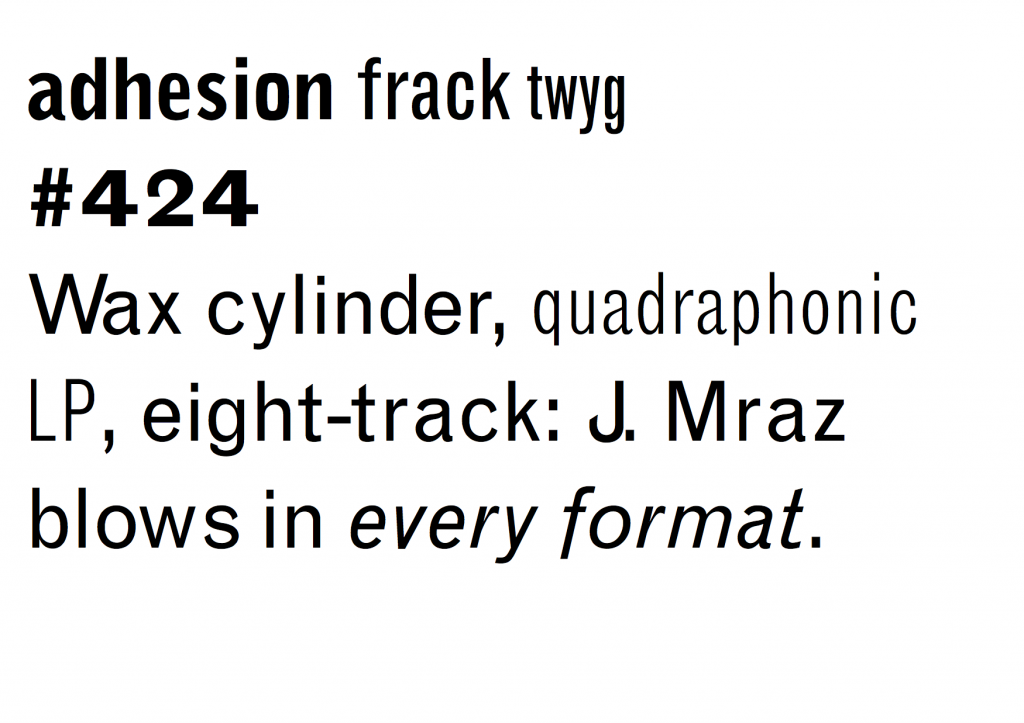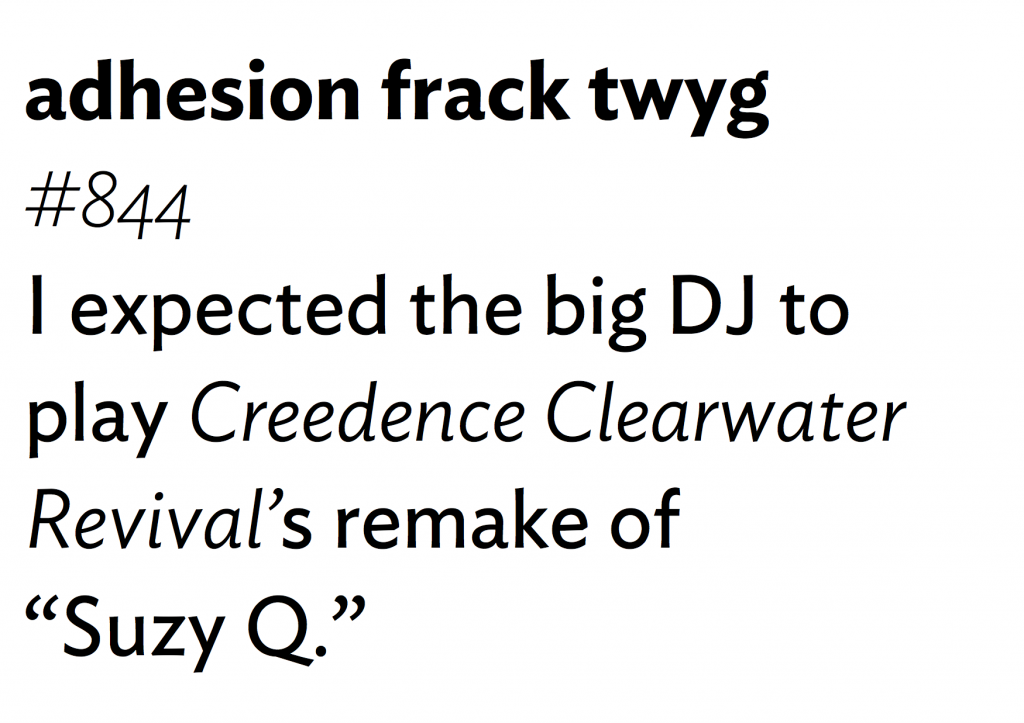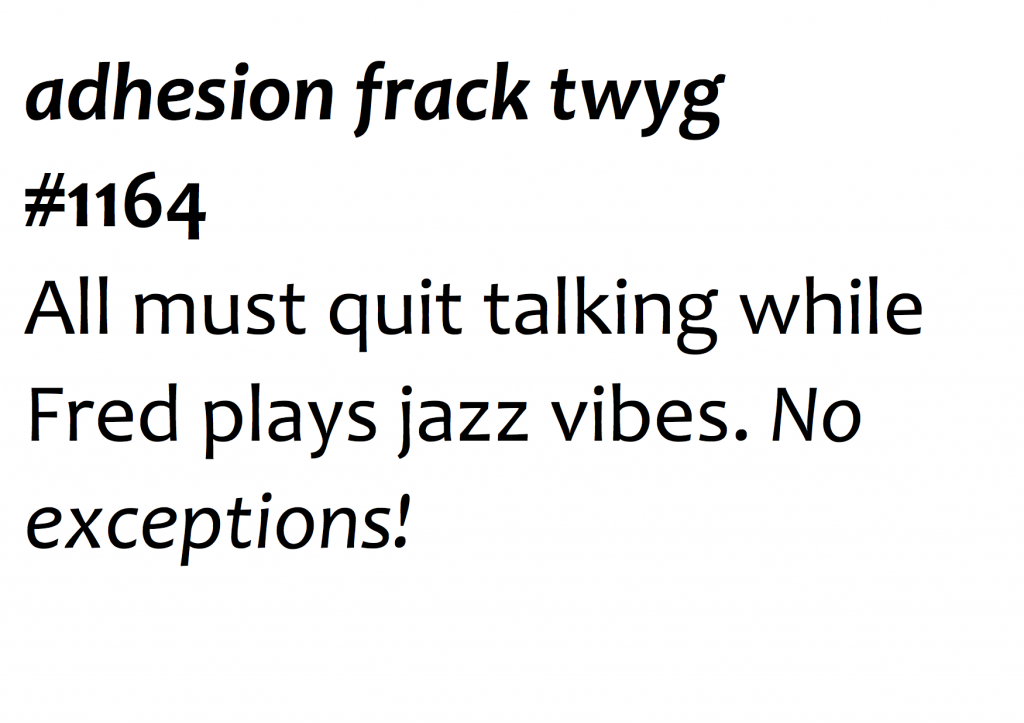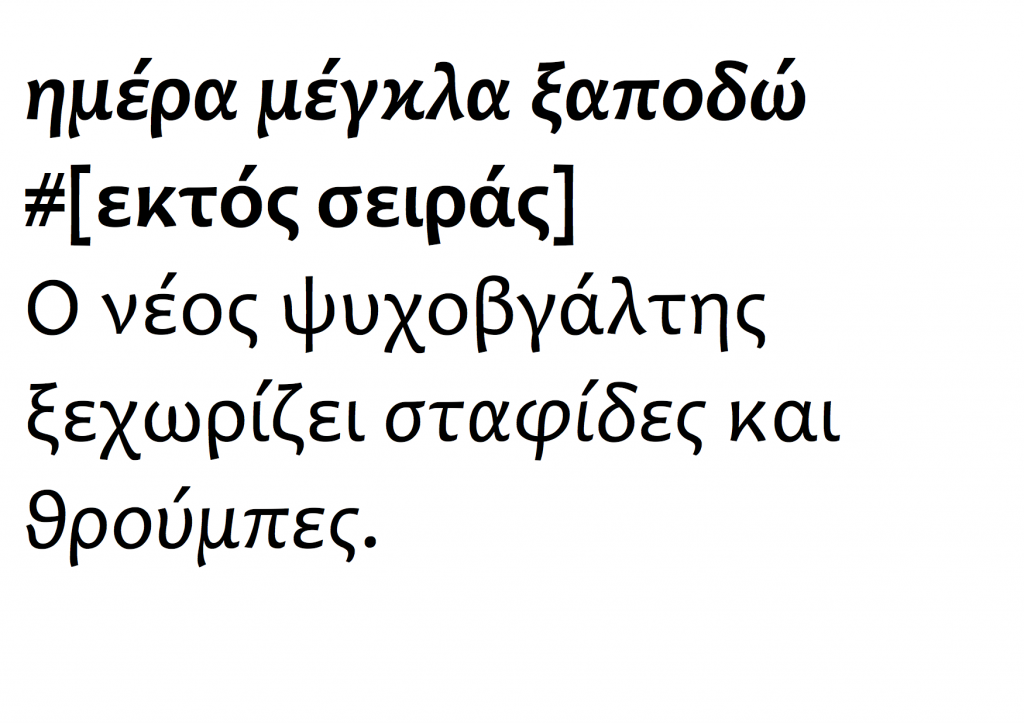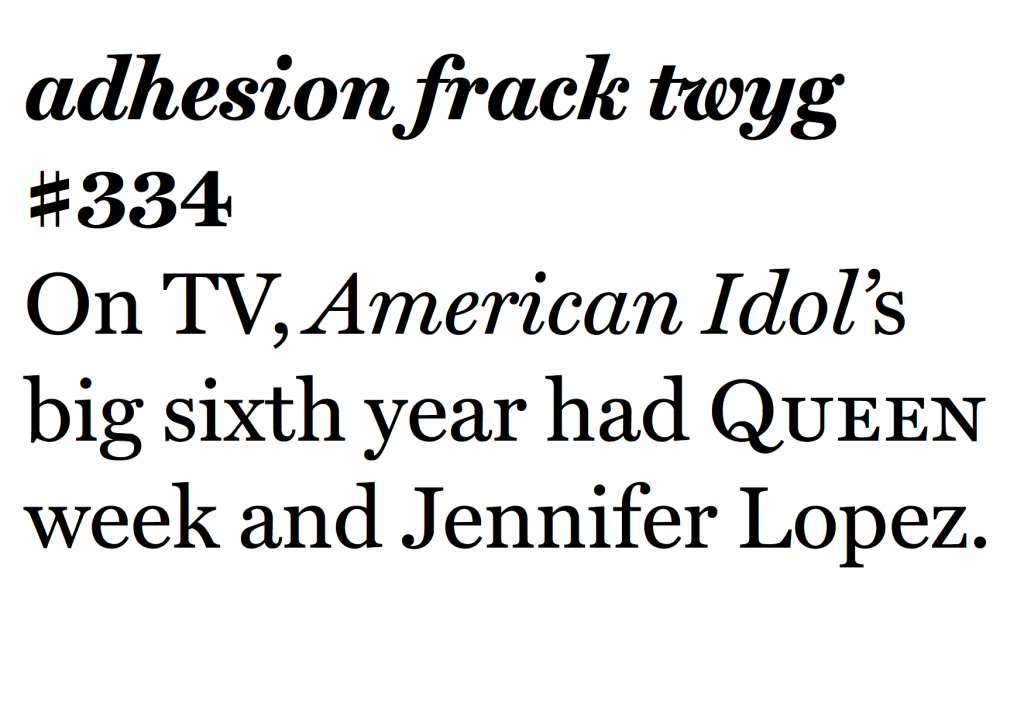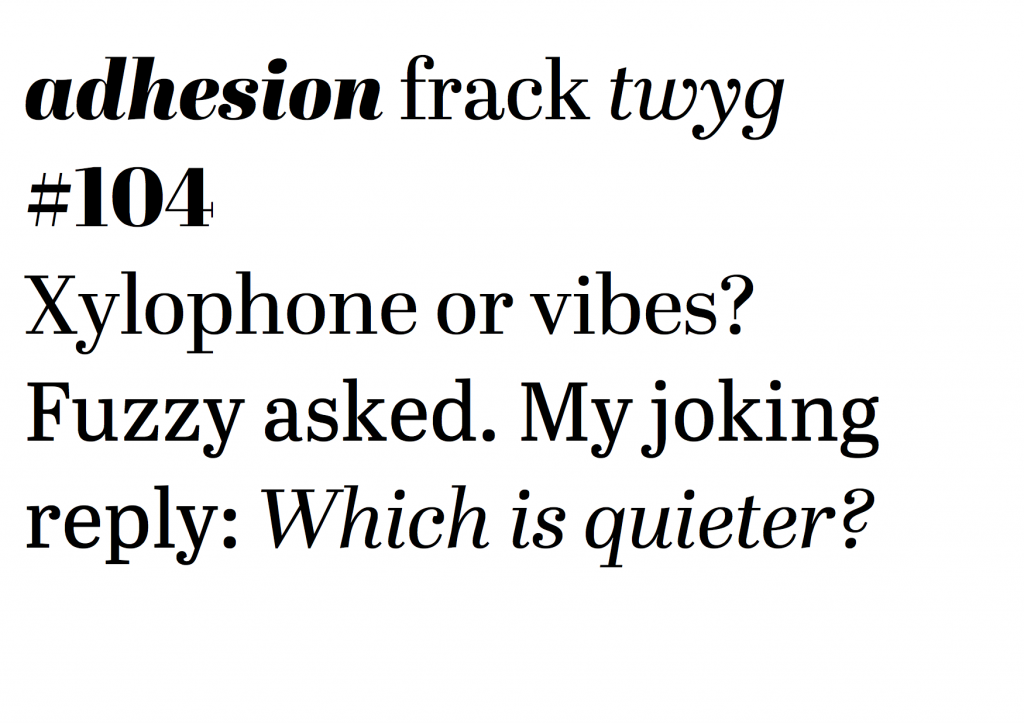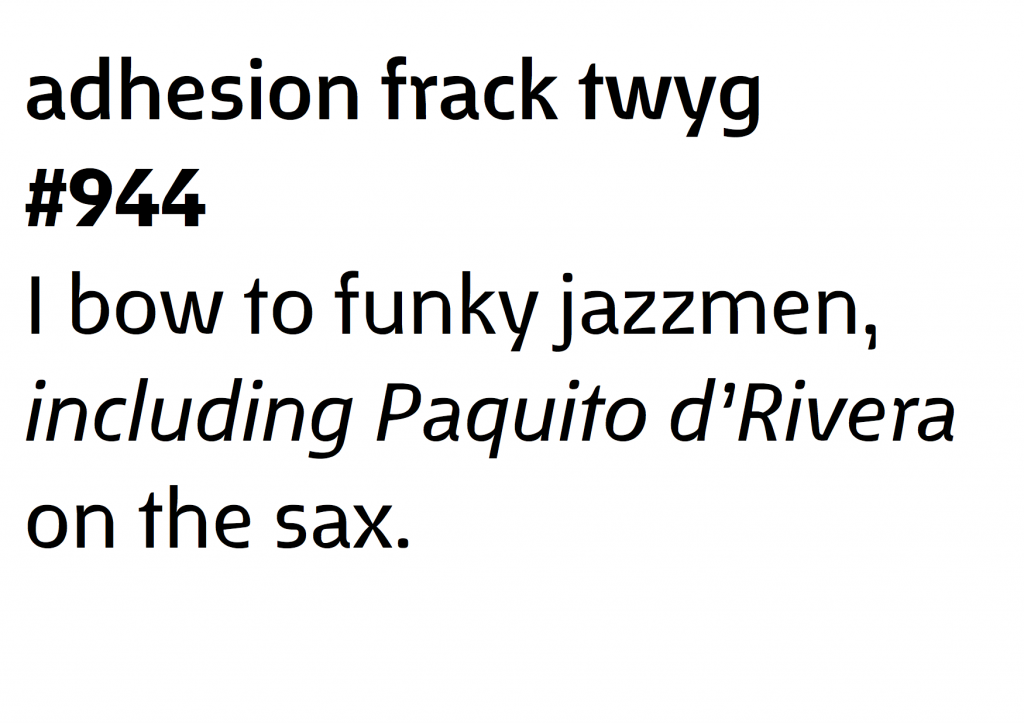Elliot Jay Stocks Reading has been mentioned throughout so many of the interviews that we’ve done over the past four issues and it seems to have become known as one of the best places in the world — literally — to study type design. Could you tell us about how that has come about and when you think England joined the typographic ranks usually associated with countries such as Germany and the Netherlands?
It’s more the other way around: other regions have joined England, because a lot of the technology and the design production revolving around type has been carried out here; so even if you’re looking at pre-digital times, most design work for Monotype and Linotype was happening here, even if it was produced worldwide. In the case of Linotype, designs would happen here, the production in Germany. But the designer was British, and of course, Monotype was based here.
So a lot of the typographic education was established in Britain. The other consideration is actual scholarship around type. Going back to the mid-20th Century, Ward, Morrison, Fleuron and Spencer wrote about type and treated it as a serious subject of study. They were responsible for doing quite a lot of important work on how typefaces are received by readers. When we began really looking into type in the late 1960s and early 1970s, it was already continuing along a fairly well-established pattern. Now the Typography Department in Reading has a couple of distinct strands of inquiry and activity: typography (including journal and book typography), information design, and typeface design. These things have always been developed in parallel. When we started the Masters programme, we just moved this one step higher. I think reading the market correctly, typeface design was beginning to mature as a discipline and needed a more formal structure in education.
EJS So type design at Reading had always existed, but it was the introduction of the Masters course that gave it a ‘public’ face?
It’s interesting to note that there was a lot that happened pre-digital that left only paper documents. Here in Reading there are workshops teaching letter calligraphy with all the big names of the 1970s. We have an amazing library: a lot of the material from that time exists for people who are beginning to learn about typeface design, so they can see that they’re not the first ones to deal with certain design problems.
Treating typeface design seriously — not just as a practice but as the main focus of study — was certainly happening at Reading from 1999 onwards. That is a critical distinction. It’s not just something that people learn by training themselves to use tools like pens or brushes or computer applications; it’s also something that has a context. There’s a typographic history that informs decisions, an environment of use that might inform our decisions, and quite a lot of past practice that informs our style choices. Whether something is ‘original’ or not, or ‘conservative’ or not is not an issue that exists on its own; it’s something that comes out of a reading about what other people have done.
EJS Am I right in saying that the Masters course doesn’t require a degree in something specifically type-related?
Most people who come to do the Masters course come with a few years’ experience. They might have a general design degree, or they might have a degree in an unrelated field, but have happened to move into design. We’ve had people who were trained as product designers or architects, so their professional life moved towards graphic design or typography. We also have people come to us who have trained in things like computer science degrees.
EJS Is there any kind of consistent thread running through students’ past experiences, whether that’s a common pre-master’s degree or a common work experience? Or is it literally across the board?
There is an overwhelming presence of graphic design-related degrees, but because the admission is by portfolio and usually interview, what we try to do is find out whether the person has the right combination of skills; we want someone to have form-making skills. But you also want them to have an inquiring mind to ask questions about how things happen the way they do, or why they’ve developed in the way they have. It is this foundation of curiosity about the subject that you build on to then develop the skills. For example, if you want to find out how to create an interesting, new, modern typeface, you’d need to ask, ‘how did the tools that generated the first models get used?’, or, ‘what are the conditions of using these tools that give rise to certain forms?’ You need to understand how the tools make shapes and then you can begin to understand how these shapes represent a certain cultural moment; you can then update this and make a typeface based off its time.
EJS It seems that the academic side of typography is a fairly large part of the course as well? What’s the split between the academic and historical learning, versus the practical drawing?
On paper it’s about fifty-fifty. In terms of the time students’ spend, it’s probably sixty percent practical and forty percent academic. However it’s not easy to distinguish this, because a lot of the research that students do is directly related to the practical work, which is most evident in the non-Latin work. People who might be interested in designing a Devanagari typeface, for example, might undertake a lot of research that will help them to understand this new script; that would fall under the umbrella of academic work, but it’s directly related to the practical work.
EJS Do you find that non-Latin typography is something you’re seeing more of these days?
Yes. I think one of the main achievements of the course is that it has demonstrated it’s possible for people who are non-native to a script to design very good examples of that script if they have the right foundations. I don’t think it’s very easy at all for someone to start with paper and design a good typeface in a script they don’t understand; but you can get that same person and put them in a structured environment, give them the right things to read, the right things to look at, and then give them a constructive feedback that will allow them to build a criteria for making decisions. Then fairly quickly you can see that design skills will transfer from a script that people are familiar with to scripts that they are unfamiliar with, and they will produce fairly competent typefaces.
EJS You have interesting people coming out of this learning such as David Brezina, who has gone on to contribute a lot to the multi-script industry — especially with Veronica and José — in the shape of the Rosetta type foundry.
The interesting thing is, if you look at David’s work, he’s done a typeface that’s extremely successful, but he’s also produced a dissertation on Gujarati that’s now a source of reference for the next person who wants to do that. So what we’re producing is a body of knowledge in the field that allows people to help themselves when they can’t come to Reading. A lot of this is online and it’s free to access. If you want to do an Indian script, you’re not alone anymore. You don’t have to look up Wikipedia or some resource you can’t evaluate. What we produce has passed a certain editorial control and has been compiled with access to substantial resources. We’ve produced a body of literature that turns typeface design from simply a domain of practice into a proper field of study. It’s about moving typeface design towards something like architecture: there’s constant dialogue between practice and research.
EJS That must be incredibly rewarding for you to have students and see them not only produce good work, but for that work to go on to inform the next generation of students.
Probably the most rewarding thing is to see projects that started as Masters projects have successful online presence. Titus Nemeth’s Arabic typeface Nassim being converted to a web font and used for the BBC Arabic website is a very good example. For a student project to achieve something like that is huge. David’s Skolar is everywhere as a web font, and again, it’s something that is almost inconceivable for someone to do within a year of just putting pencil to paper and starting to sketch. For every best-case scenario we have like this, we also have a lot of typefaces that just served as learning tools for people; but that doesn’t mean that they weren’t equally good designers, or better in many cases. People learn how to be good designers within their projects, then put them aside and develop very successful careers. The interesting thing with the majority of Reading graduates now occupying quite a lot of positions within type foundries is that they tend to bring with them this more serious, research-based approach to their work.
EJS I’m interested to hear about the short course you run as a taster for the MA.
The short course began because we have a lot of professionals who couldn’t afford to take time out, but had experience in designing or wanted to improve their skills very, very rapidly. So we took the most interesting aspects from the Masters course and packed them into a weeks The course includes about twelve people — plus three full-time staff — who dedicate a whole week to the short course. It also has visitors, such as Erik Spiekermann, who do individual sessions. We now have a second week, in which people are encouraged to work on extending the ideas they’ve developed in the first week.
EJS So it can be steered in a particular direction relevant to the student?
Exactly. And that is why there’s an abundance of staff. We can take one or two people aside and do exactly what they want, so that there isn’t necessarily a fixed programme. There are different sessions that happen in parallel, and there are things that double up so that people can do different taster sessions, but before they come, we know what their main objectives are and we set aside time specifically to deal with the things that they want to learn.
A lot of people aren’t interested in non-Latin until they start doing it and realise it’s a much more interesting design challenge than the Latin script. If a student just wants to introduce themselves to the full range of design expression, they could look at very early newspapers and Herbert Matter’s posters from the 1930s to Otl Aicher’s posters from the Munich Olympics to try and see how the type changes in response to different styles. When I say put these things side-by-side, I mean the originals; not just a picture, but the original Herbert Matter scheme posters from the 1930s beside the original Otl Aicher posters from the 1970s. You can look at these alongside 19th Century type specimens and see where the sources of all sans-serifs might be.
For people who have not been to Reading as visitors, it’s difficult to imagine the level of access to material that, in other places, would be permanently behind closed doors.
